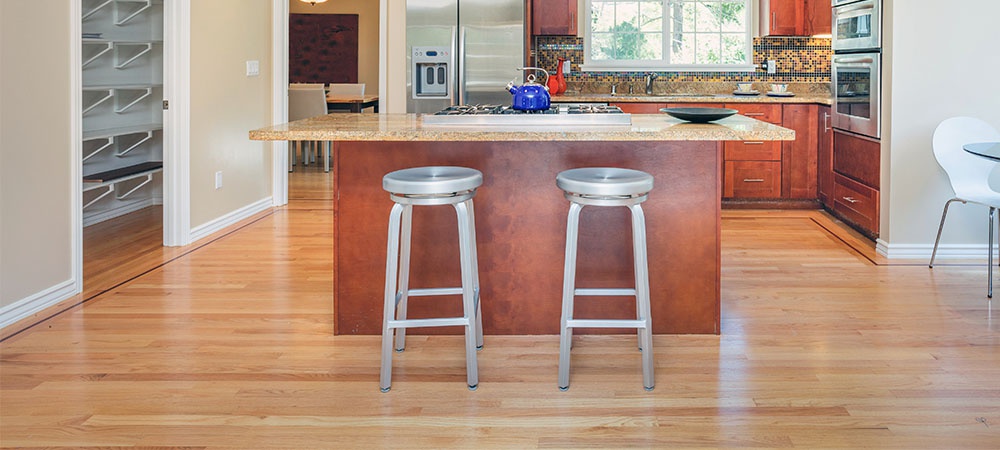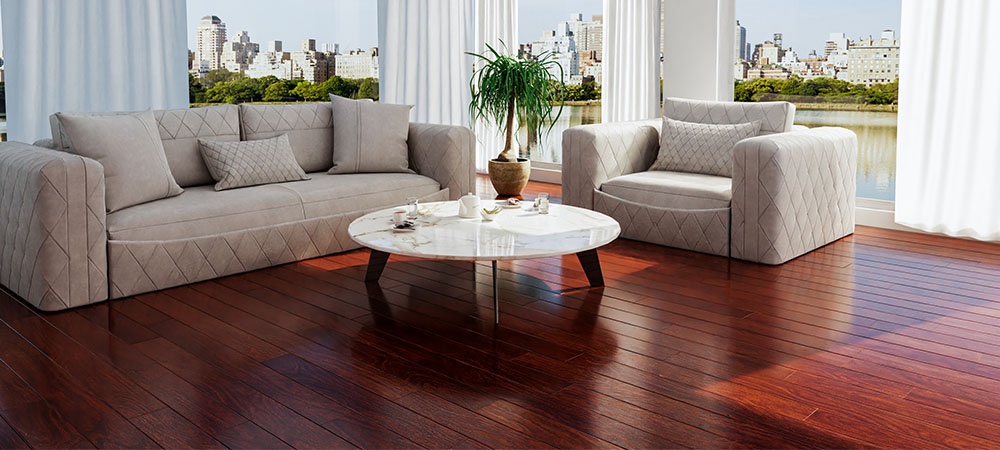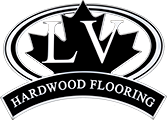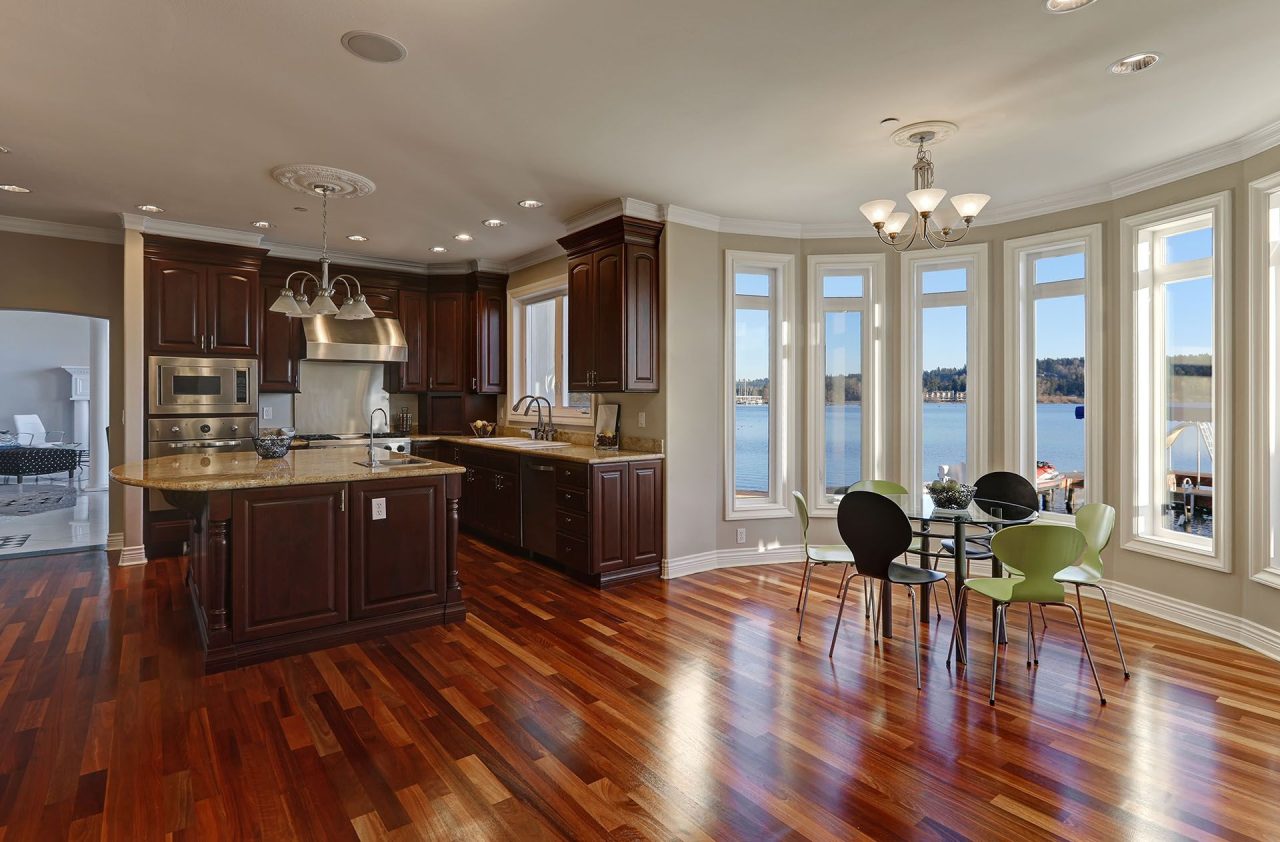Hardwood flooring is one of the oldest and most reliable options for any home. It’s common in many of today’s finest newly built homes and the most upscale older properties.
But what are the best materials for hardwood floors?
The problem is, where do you even begin? There are more than 40 different wood species for hardwood flooring. We’ll save you the stress because we have experience installing various hardwood varieties.
We’ve narrowed them down to four — based on prevailing aesthetic, quality, performance, and maintenance requirements.
Additionally, we’ll also highlight the pros and cons of choosing each material for your hardwood floor.
Oak
For flooring, oak hardwood flooring is the gold standard of species popularity. Both red and white oak are excellent choices for flooring since they are long-lasting, affordable, and easy to customize with various stains.
Also, you may have high-traffic households with children and pets. And they can make a mess of softer wood by scratching, denting, or damaging the flooring.
But oak has a naturally strong grain pattern that masks abnormalities such as scratches, dents, nicks, and minor flooding issues.
Pros
- Oak flooring’s widespread appeal makes it a no-brainer if you’re planning to sell your home in the near future.
- Oak flooring is a traditional option because of its classic style and the fact that you can use it in various settings.
- Among other types of hardwood flooring, oak has a unique look because of its distinctive grain and knot patterns.
- Both red and white oak have a beautiful natural hue. They can be stained to achieve a wide range of effects, from a worn whitewash to on-trend grays to classic walnut stains.
Cons
- Unlike other flooring options like carpet, oak flooring may be pretty noisy.
- Unlike some hardwood flooring materials, oak tends to swell and shrink slightly depending on the prevailing conditions.
Maple
Maple, like oak, is another of the best materials for hardwood floors. And it’s readily accessible, making it an intelligent choice for low-cost renovations.
Maple hardwood flooring’s natural tones span from pale yellow to deep reddish brown. And the variation makes it a versatile wood that takes stains well.
Pros
- Maple’s uniform colour offers a sophisticated, understated aesthetic that’ll allow your furniture to shine.
- The soft, sandy yellow tones and subtle grain pattern of maple make it an ideal complement to light and dark finishes.
- Flooring is typically made from either sugar maple or black maple, two of the hardest maple species.
- The rapid and widespread spread of maple growth makes its supply abundant. Therefore, its price is lower compared to others.
- In terms of cost, it aligns with other American hardwoods like oak and cherry.
Cons
- It’s not simple to change the shade of a maple floor, and any damage, no matter how slight, is usually pronounced.
- You may not want to install maple hardwood flooring if its natural tint isn’t to your taste. Maple’s firm texture prevents stains from penetrating deeply into the wood.
- Maple’s hardness makes it resistant to scratches. But if one does appear, it’ll be more noticeable against the wood’s smooth grain.
- Maple may be tough, but it’s not as steady as other woods.

Walnut
Walnut produces one of the best materials for hardwood floors. It has a cozy look and feel, making it ideal for a bedroom.
People looking for warmer, cozier floors often choose domestically grown black walnut because of its attractive mid-tone colour. The grain pattern of walnut is typically straight and open. But it can have some movement to it depending on the cut.
Pros
- The natural beauty of the walnut wood flooring will only increase with age.
- Walnut flooring’s natural resistance to insects is one of its most prized features.
- Walnut flooring is an excellent choice in a humid climate because the treatment keeps the wood in good condition.
- Its installation process is quick and causes less disruption.
Cons
- The wood’s gloomy tones in a small room may make the room feel even smaller.
- You must give a high degree of care to walnut flooring. Scratches and scuffs are easily caused by improper handling.
- Another drawback to walnut flooring is the darker tones it typically has. It causes more dirt and debris.
- Walnut floors are pretty long-lasting; however, they require a lot of care in the form of regular dusting and mopping.
Related Article: How to Stain Maple Hardwood Floors?
Cherry
Cherry is making a resurgence amongst homeowners who still like the opulent appearance of dark floors. It’s one of the species getting a comeback as a nostalgic flooring option inspired by the past.
Cherry’s domestic species is similar to several exotic tropical hardwoods that are difficult to source due to global supply chain concerns. And that’s another plus for this wood.
Pros
- There is a wide range of tones in this wood. This feature makes it suitable for use in conjunction with other types of wood to create a home that is both comfortable and inviting.
- This wood is so durable that you may use it in high-traffic areas without showing signs of wear. You can use them at the dining table without worrying about damaging the floor.
- Brazilian cherry flooring, once laid, has a lifespan of about 30 years, much longer with regular care and cleaning.
- Brazilian cherry flooring is an excellent option for use over radiant floor heating systems. It’s one of the few hardwoods that may be used for this purpose and will keep your feet toasty in any weather.
- The wood has extraordinary density and strength. It may be sanded and refinished numerous times throughout its lifetime.
Cons
- Brazilian cherry is among the most expensive options for hardwood flooring.
- Like other dark-finished floors, Brazilian cherry flooring shows grime and dust easily.
- Dark-stained flooring can make a space appear even more constricted and gloomy.
- Brazilian cherry is unsuitable for usage in damp or humid environments because of wood’s inherent capacity to absorb water.
Related Article: How Much Does It Cost to Install Engineered Hardwood Floor?

Summary
The best materials for hardwood floors are numerous. But the oak and Brazilian cherry are two of the great options you can trust anytime.
For hardwood installation, you can go DIY or get a professional. Either way, you’ll need quality flooring materials to ensure your installation lasts long and comes out beautiful. And our store offers that luxury.
You’ll get the finest hardwood flooring materials for your new house flooring or renovations at LV Flooring. Check out our fantastic collection of hardwood floor planks comprising different materials today!


